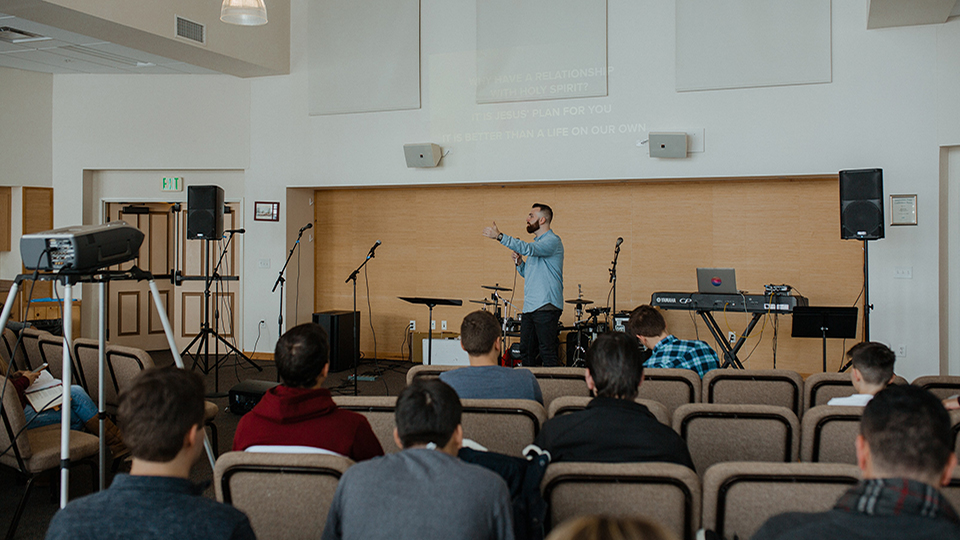
As we have looked at the metrics that drive church health, we have seen the “nickels and noses” measures of local church life aren’t truly the best measures of church health. In fact, in the U.S. Assemblies of God today, a slightly higher percentage of large churches are plateaued or declining than are smaller churches. So if bigger isn’t always better, what is better?
We’ve considered a few metrics that measure things like missional effectiveness, assimilation, and true kingdom growth. These have shown us how we’re really doing at doing the job Jesus gave us to do. How many of us does it take to reach someone with the Gospel each year? Are we maintaining contact with those converts long enough to get them into the waters of baptism? Are we adding to the kingdom of God, or just to our numbers in a single local setting?
The CS Ratio
Next up, is a ratio that’s unique to and essential for the Spirit-empowered Church, one that measures how many of our converts are taking the next step of experiencing Spirit baptism. We call it the CS Ratio–or Conversion to Spirit-baptism ratio–and we insist that it’s truly a measure of both effective discipleship and mobilization.
Let me explain
In the Spirit-empowered local church, we first want to know the ratio of converts to Spirit-baptism because such a calculation will tell us how we’re doing at discipling our converts and guiding them to this critical experience. Like the Apostle Paul’s question of the Ephesian believers, “Have you received the Holy Spirit since you believed?” They hadn’t, but soon did receive–and we have the same goal for our converts.
So, this ratio measures our progress in leading our converts to this empowering relationship. Like our convert to water baptism ratio, we want to see at least a 4:1 result, allowing for the fact that our wider conversion net may “catch fish” that don’t normally swim in our neighborhood. If we’re effectively discipling the new believers that connect with our church, we’ll see them water baptized and Spirit-baptized, so we use a similar target ratio for both the CW and CS–in this case, 4 to 1.
But we can’t stop there. You see, someone might get excited if they discover that their CS Ratio is actually 2:1, or even almost 1:1. YES! We think. Because such a ratio would mean that nearly ALL of our converts are taking this important discipleship step. There is, however, a second side to consider with this ratio. Since Spirit-baptism was given to us principally to empower us for witnessing, shouldn’t growing numbers of Spirit-empowered believers lead to even more rapidly growing numbers of conversions? Spirit-baptized believers are fully equipped for significant impact in their families, their communities, and around the world.
Spirit-baptized believers are fully equipped for significant impact in their families, their communities, and around the world.
That means a CS that’s too low may be telling us that we’re failing to mobilize the Spirit-empowered folks we have. Some churches treat Spirit-baptism as though the experience is their little secret or private possession. They celebrate the presence of the Holy Spirit inside their walls, but fail to connect with the true purpose of the encounter. So they shout and celebrate together, but limp their way from Monday to Saturday, seldom making an impact on the world around them. Such churches have a mobilization problem.
So, when we consider the mobilization side of things, we really don’t want to see a CS Ratio below 3:1. If the ratio moves below that threshold, we are likely discovering that many of our people are experiencing Spirit baptism, but the number of our converts aren’t being significantly affected. On the Day of Pentecost, 120 Spirit-empowered folks witnessed 3,000 conversions–on a single day! And that was in a culture just as hostile to our message as most of our communities, if not more so.
Ultimately, a healthy CS Ratio will likely land somewhere between 3:1 and 4:1. While some could argue the finer points of this target, it seems likely that this range will allow us to continue reproducing Spirit-empowered believers at a healthy rate–and that’s critical for the Spirit-empowered local church’s future.
The beauty of this ratio is that when our numbers are outside this range, we can determine if we have a discipleship problem or a mobilization problem. If the CS Ratio is higher than 4:1, we know ours is a discipleship need. We simply aren’t getting our conversions to this point in their discipleship journey. If we fail to do that, how long will ours continue to be a Spirit-empowered congregation?
And, if our CS Ratio is below 3:1, we know we must work to activate our people toward the reason God has given such power. We must mobilize them or they will continue to view this gift as something for their own private blessing.
In the U.S. Assemblies of God, smaller churches (under 200) have shown greater success with this ratio, keeping theirs near 4:1. But we’ve already seen that many of these churches aren’t producing converts at a healthy rate (AC Ratio), so this bit of good news might be a bit misleading. If many of these churches had healthy AC Ratios, they would likely have CS Ratios under 3:1, revealing a mobilization problem.
Large churches are on the other end of this challenge. In our largest churches (1000+), the CW Ratio is nearly 8:1, meaning that only 1 in 8 converts WILL EVER become Spirit-baptized at current levels of discipleship. Now, these churches see a very high level of conversions, so perhaps the message here is that the ministry emphasis has shifted so significantly to a conversion focus, that discipleship can’t keep up. No matter the cause, it’s difficult to imagine a church with a CS Ratio this high remaining a Spirit-empowered local church into the next generation.
For Spirit-empowered local churches like ours, the CS Ratio is a critical measure of health. If we’re not producing Spirit-baptized believers, what will our future truly be? The CS Ratio can help any size church take a close look at their effectiveness both in discipleship and mobilization. This number can reveal if we’ve become so focused on conversions and church growth that we’re missing true people growth or if we’re allowing our Pentecostal doctrines and practices to create a sub-culture in our congregation that makes little difference in its world. Either option will reveal unhealthy realities that, in time, will prove cancerous to our future as a Spirit-empowered force.
Want more ThoughtHub content?
Join the 3000+ people who receive our newsletter.
*ThoughtHub is provided by SAGU, a private Christian university offering more than 60 Christ-centered academic programs – associates, bachelor’s and master’s and doctorate degrees in liberal arts and bible and church ministries.



